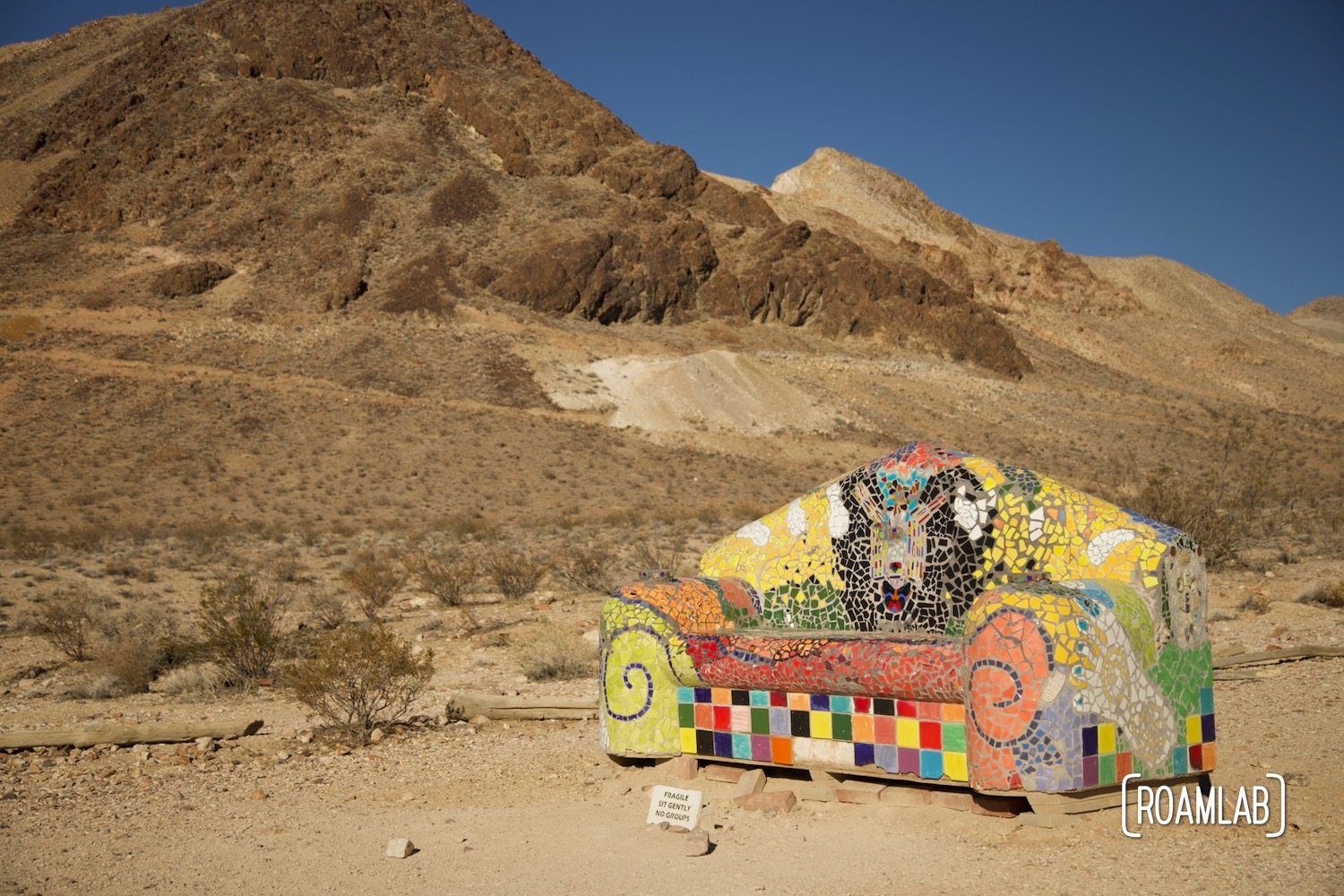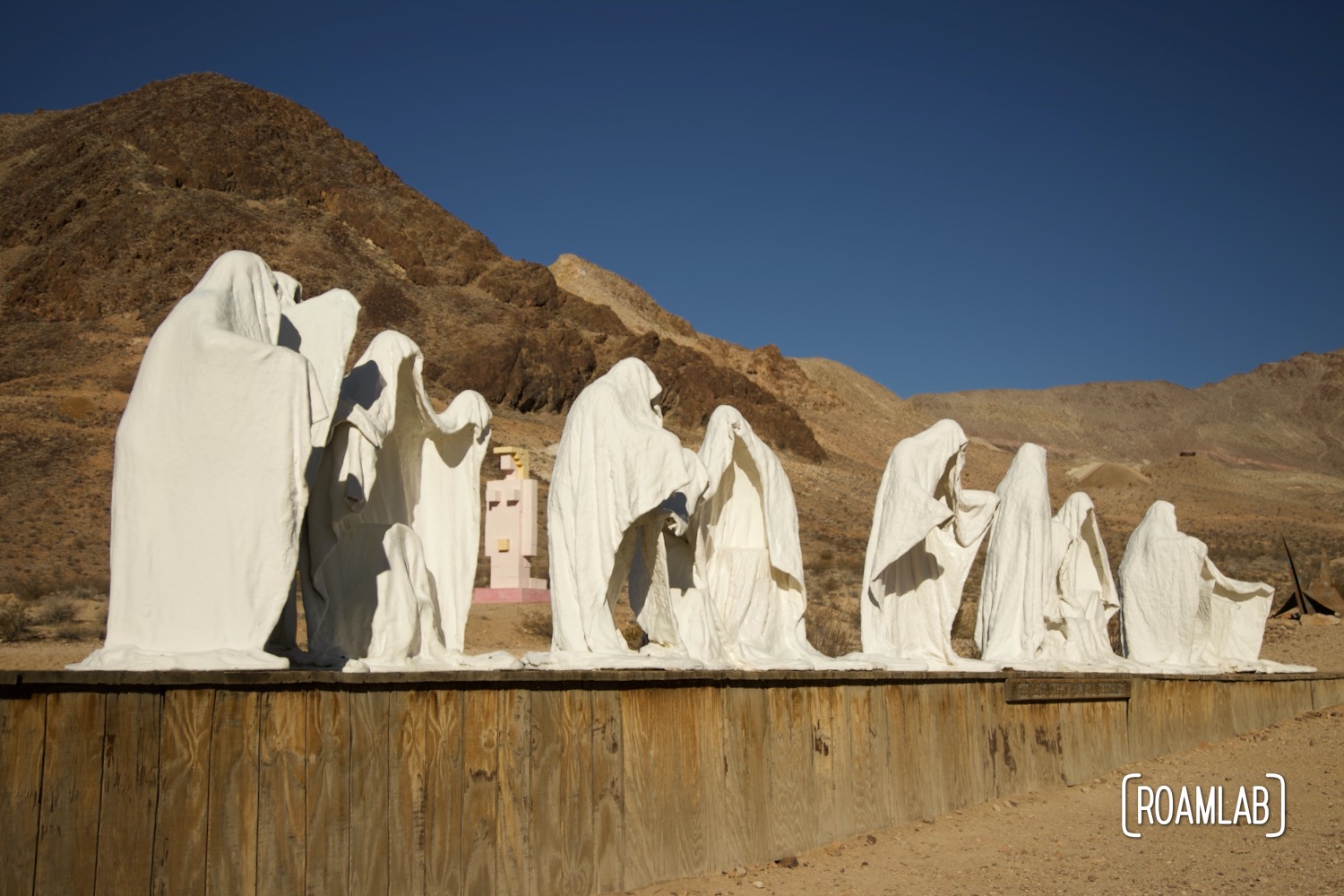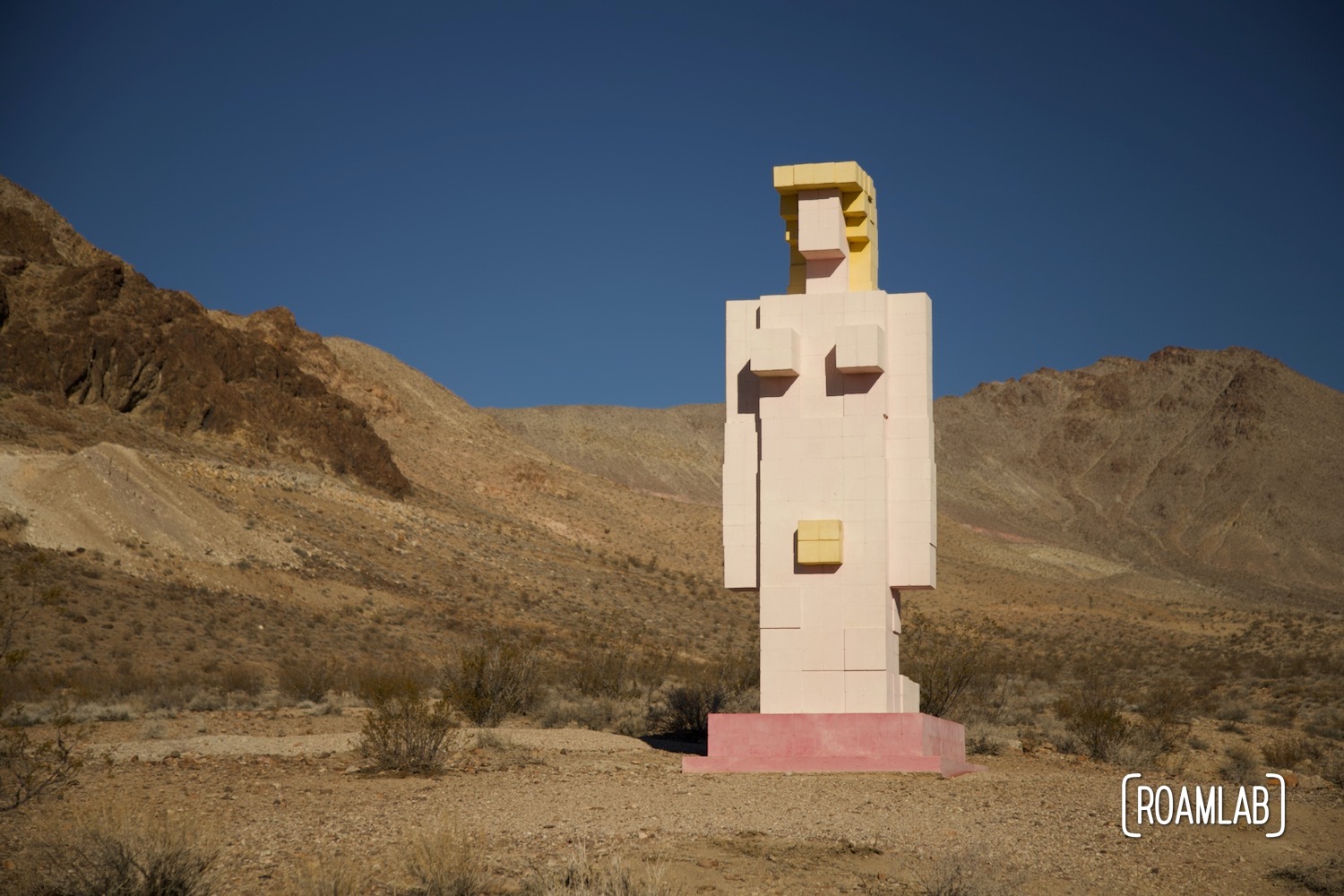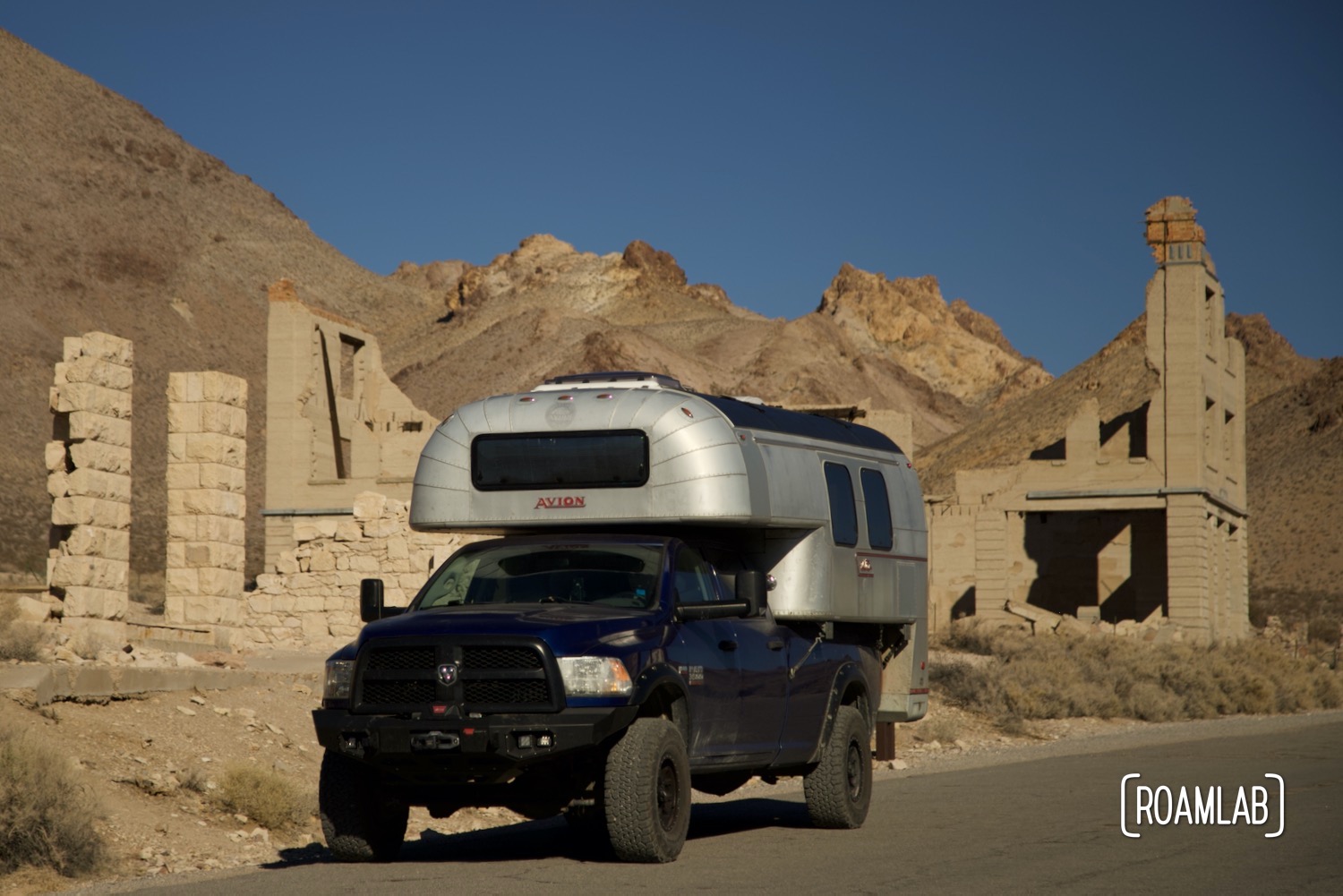Looking out the window while driving Nevada Highway 374, the land seems desolate. Sparse, dry shrubs dot the flat desert landscape, ringed in by mountains. Yet, drive two miles northwest on Rhyolite Road and there are the remains of a once-thriving boom town. There may not be much left standing in Rhyolite Ghost Town, but what remains bears witness to what was a rich and active town during the launch of the twentieth century.
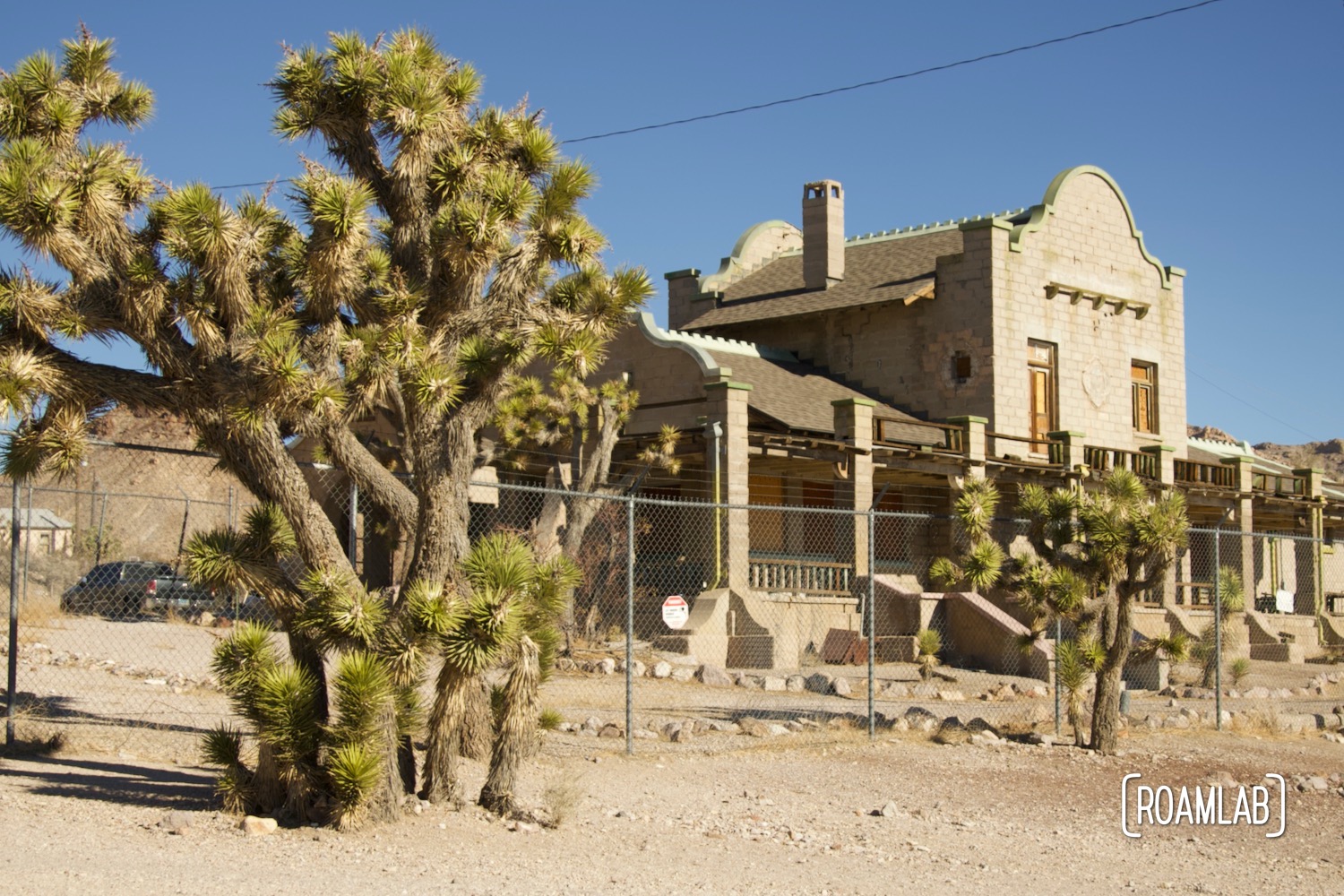
History Of Rhyolite
Named after the silica-rich volcanic rock, Rhyolite was one of many boomtowns that popped up after prospectors Shorty Harris and E. L. Cross discover gold-rich quartz in 1904. The rush was on. Soon, over 2000 mining claims covered the 30-mile region dubbed Bullfrog Mining District. But where other impromptu towns in the district floundered, Rhyolite flourished thanks to its location in a sheltered desert basin and the wealth hauled out of the Montgomery Shoshone mine.
According to the boastful owner Ernest Alexander “Bob” Montgomery, the mine made him $10,000 a day in ore, bringing national attention to the mine. What it really made may not be completely certain, but it was worth somewhere between 2 to 6 million dollars to Charles Schwab when he bought the mine in 1906. With the purchase, Schwab also invested heavily in infrastructures such as water pipes, railroad, and electric lines. By April 1907, electricity came to Rhyolite powering a mill capable of processing 300 tons of ore per day.
At its height, between 1907 and 1908, Rhyolite’s population ranged between 3,500 and 5,000 people. It was more than just a quick stop for desperate miners. Families settled in and a community developed with all the conveniences of a bustling western town. Rhyolite had its own hospital, newspaper, electric plant, ice plant, 250 student schoolhouses, opera house, stock exchange, board of trade, foundries, machine shops, hotels, and even an ice cream parlor. Most notable of all the town’s buildings, the John S. Cook and Co. Bank was completed in 1908 for $90,000 and towered three stories over Golden Street.
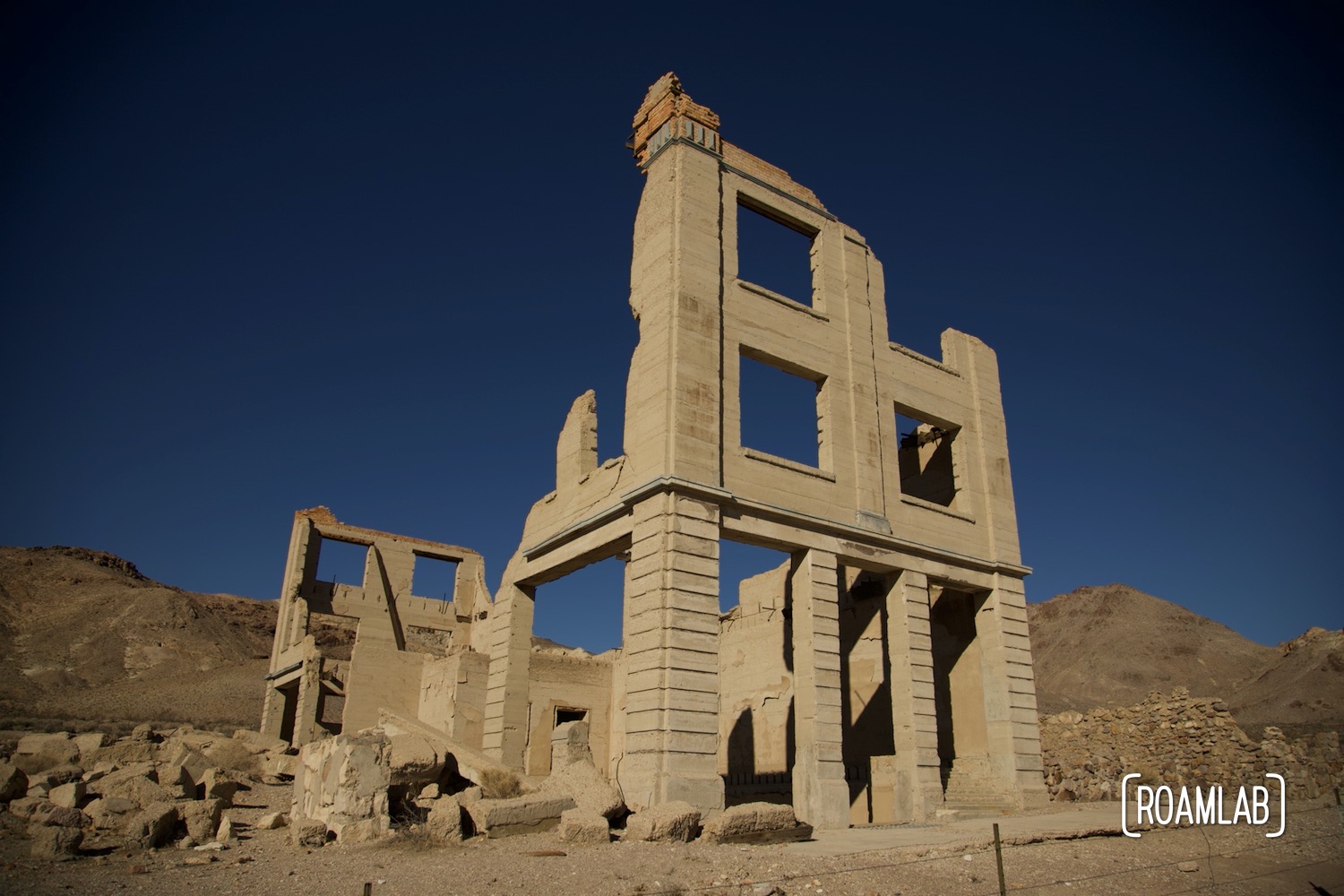
Rhyolite’s Crash
Yet, for all its development, Rhyolite remained a mining town at its heart and as gold deposits depleted, the town too dwindled. The financial panic of 1907 dealt a death blow to the town. In the following years, mines began closing and banks failed. A troubled economy made it hard for the mining company to improve the mine’s infrastructure and when an independent study of the mine proved unfavorable, its value plummeted. By 1910, Montgomery Shoshone mine was operating at a loss. The mill’s production fell to $246,661 and the town’s population dwindled to 611. The directors voted to close the Montgomery Shoshone mine and mill on March 14, 1911. And by 1916, the light and power were turned off.
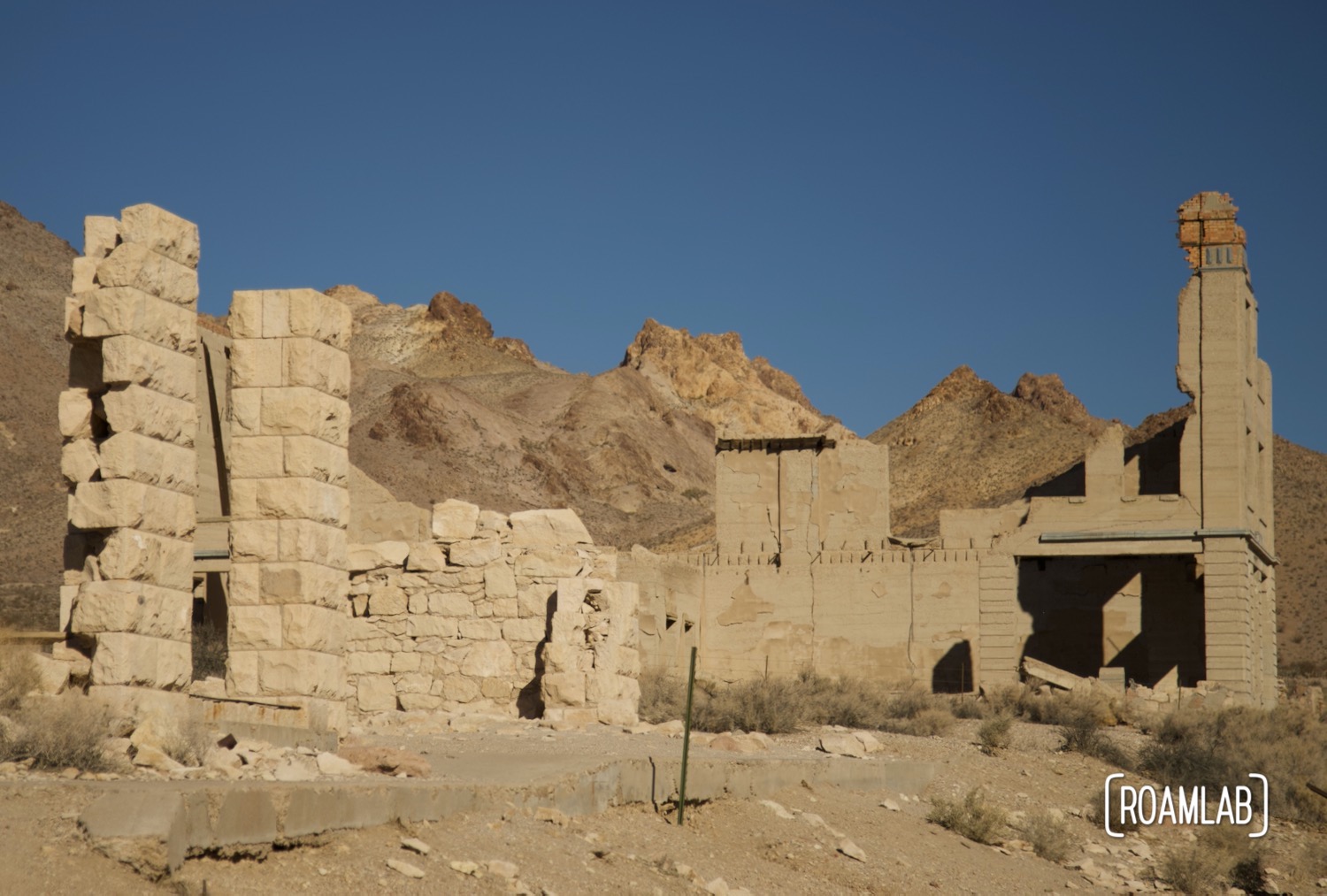
Visiting Rhyolite Ghost Town
Thanks to the remarkable success of Rhyolite, many of the original stone buildings stand (to one degree or another.). The Rhyolite Train Station is the only remaining complete structure, but the ruins of the three-story bank and old jail still tower over the remains of Main Street. Most remaining structures are fenced off to preserve the remains and include interpretive displays about the history of the town and its buildings.
The town is located two miles north of Nevada Highway 374, between Death Valley National Park and Beatty, Nevada. And a 125-mile drive northwest of Las Vegas, Nevada. While Rhyolite Road, which accesses the town is paved, there are many unpaved roads branching from it that access other nearby attractions.
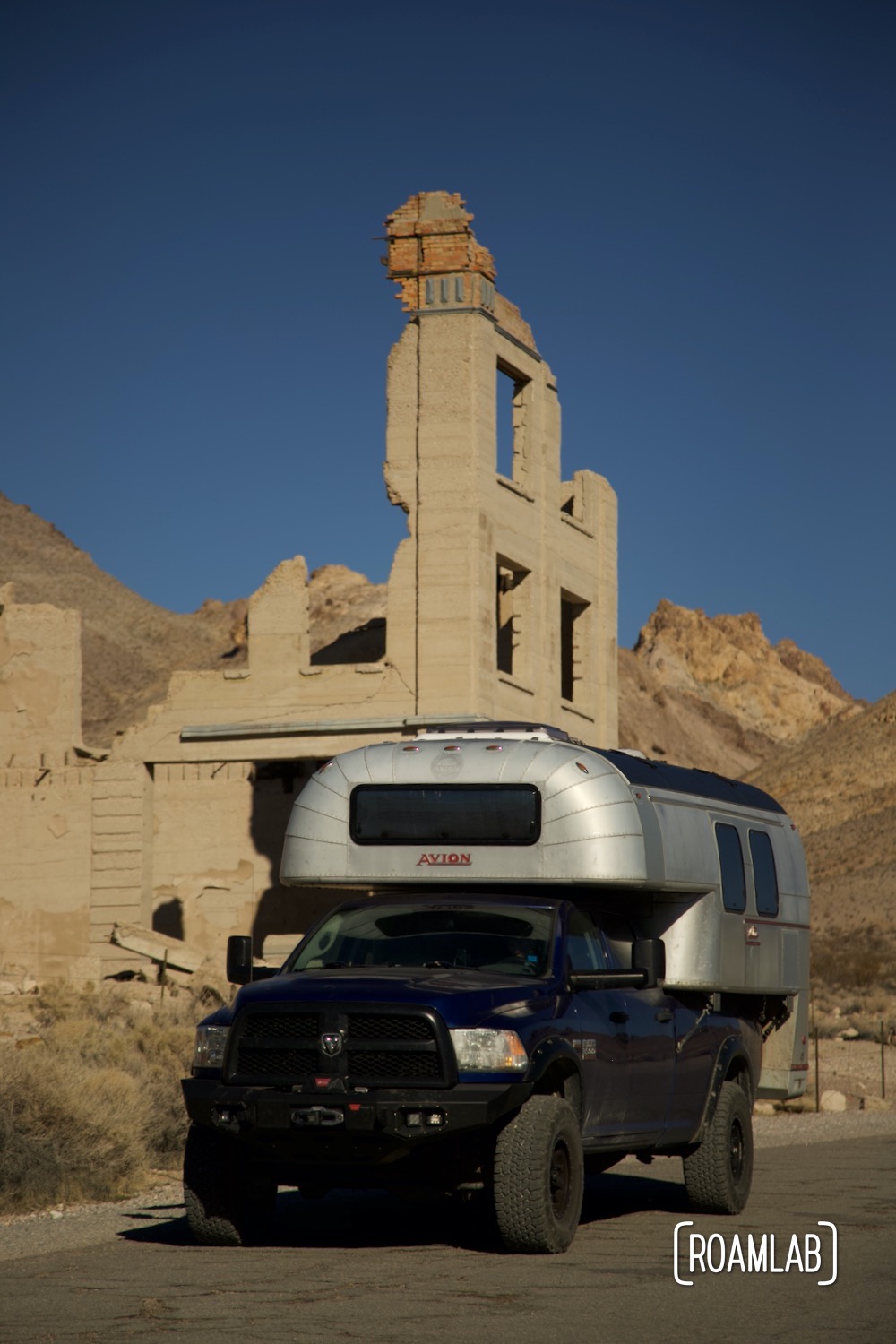
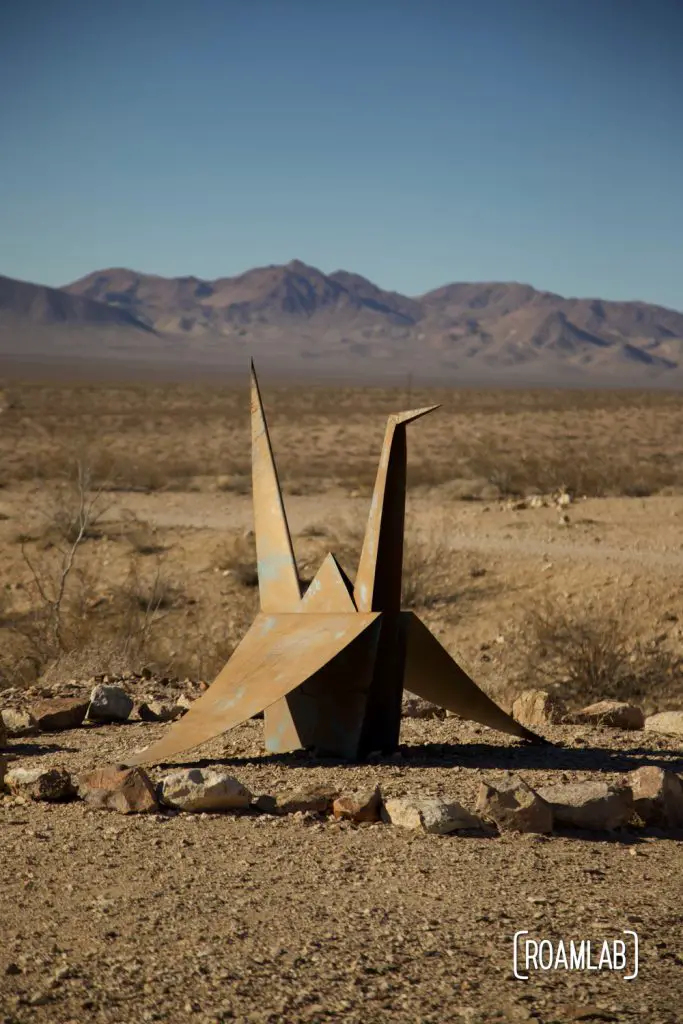
Bullfrog-Rhyolite Cemetary
The Bullfrog-Rhyolite Cemetary is a short 1.5-mile drive south of Rhyolite. It’s easy to miss down the narrow dirt road but an elevated stone and bronze plaque and a chainlink fence are visible to the east from the road. We pull into a small dirt parking lot. Winds whip through this flat, unsheltered stretch of desert and the sun has bleached out many of the relics that remain within the boundaries of the fence. It’s hard to tell if many of the blank markers were labeled in the past, only to be erased by the harsh environment. There are a few marble engraved stones. The most noticeable is the marker for Mary Elizabeth Madison (Panniment Anne). Along with a Joshua Tree, here grave is littered with old liquor bottles, pennies, and synthetic flowers.

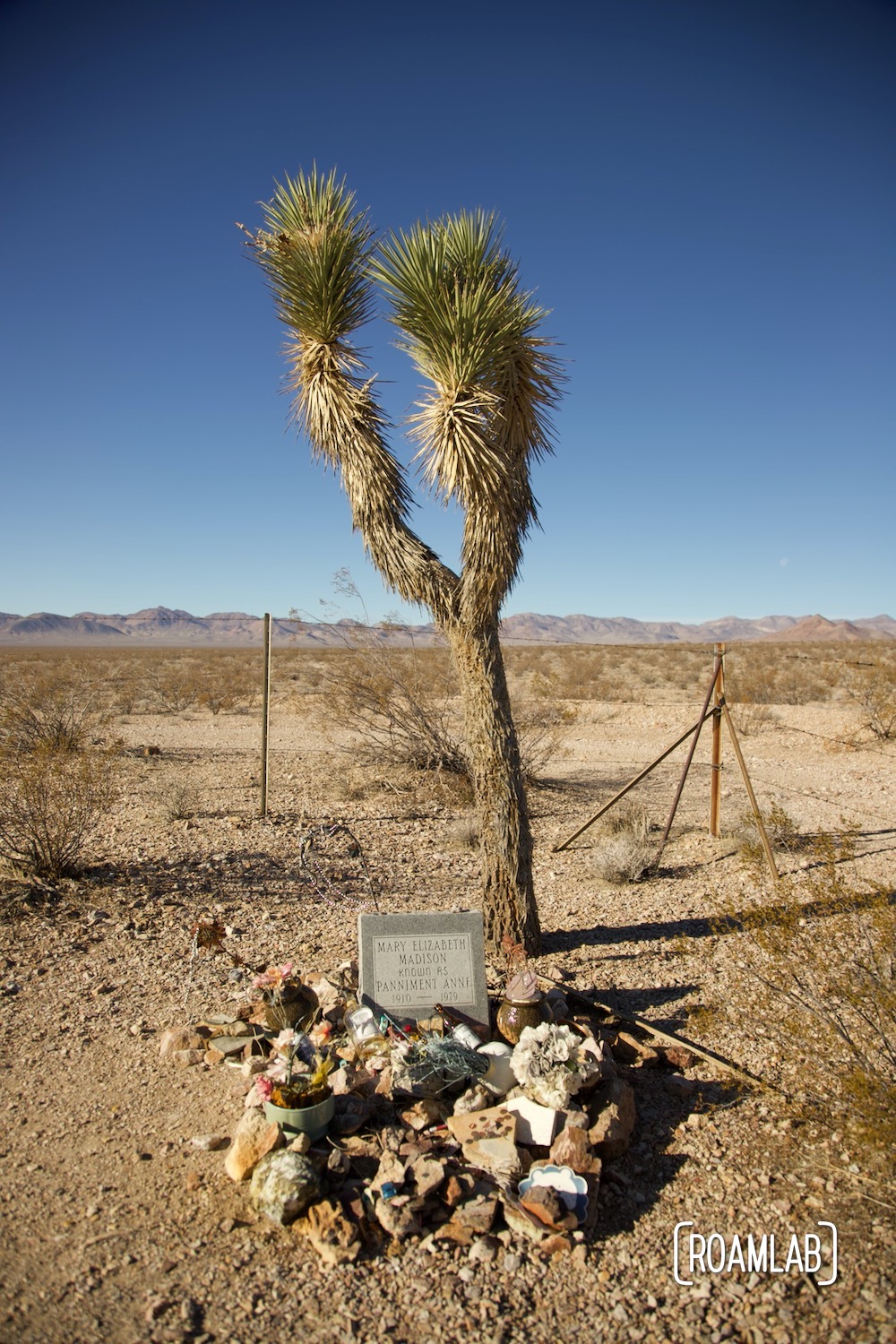
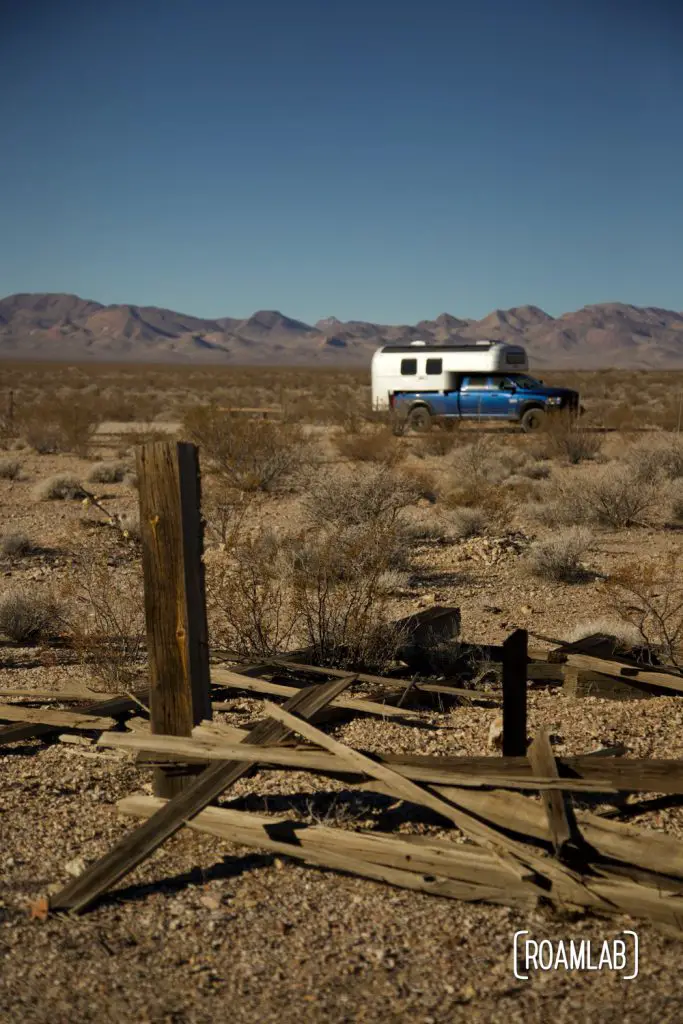
Nearby Attractions to Rhyolite
Rhyolite may be in Nevada, but it is located right on the border of California and Death Valley National Park. Rhyolite happens to be a perfect stop before launching down the rough and scenic Titus Canyon Road and only a 35-mile drive to the Furnace Creek Visitors Center in the heart of the park.
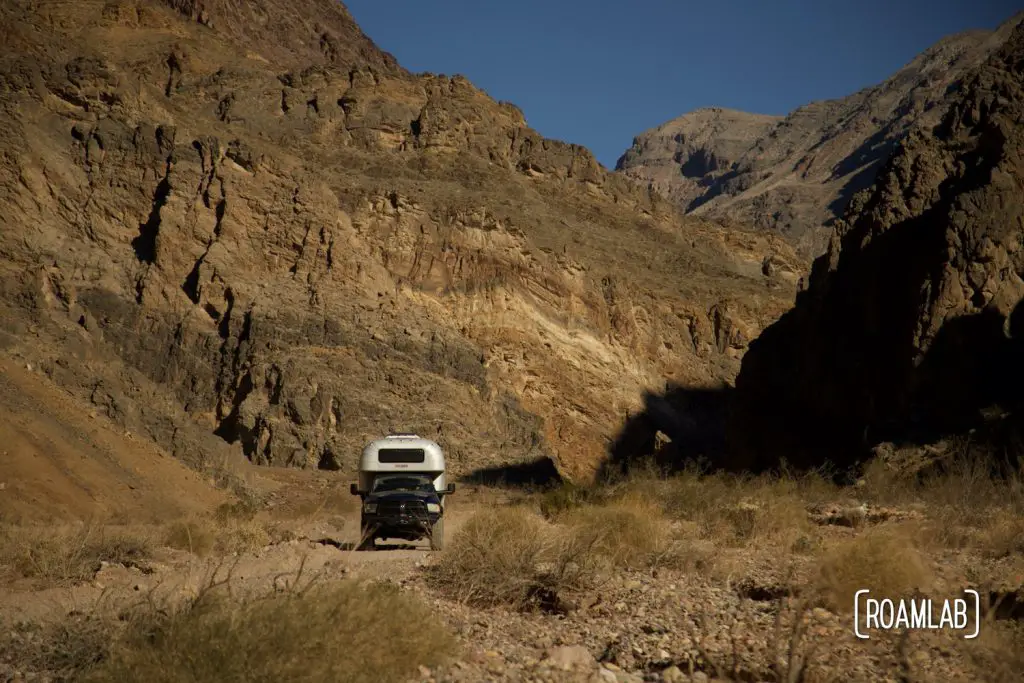
Goldwell Open Air Museum
To reach Rhyolite, you can’t help but notice the Goldwell Open Air Museum to the south of town. Save some time to grab a pamphlet and explore the museum. This resilient art has weathered the extreme environment, some pieces dating back to the museum’s inception in 1984. Learn more about the museum in our write-up.
